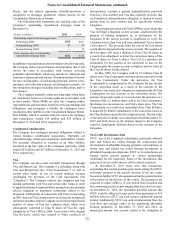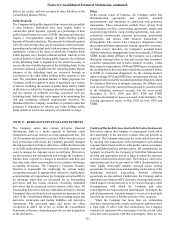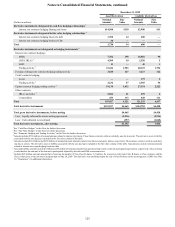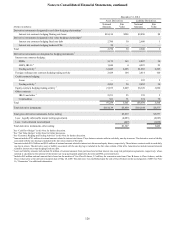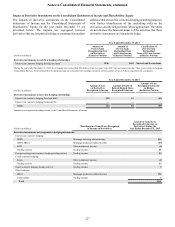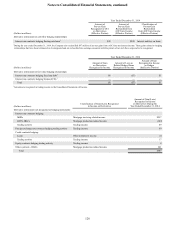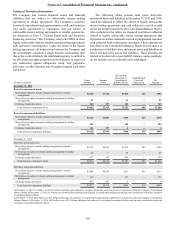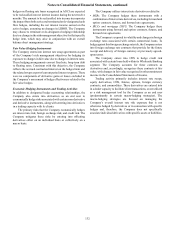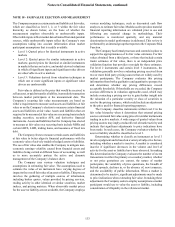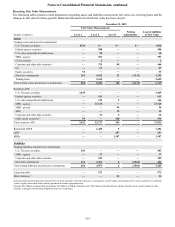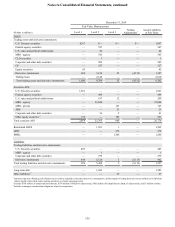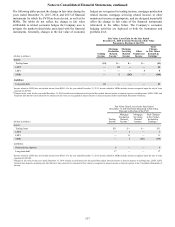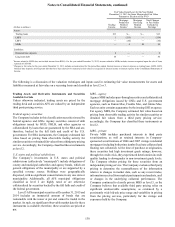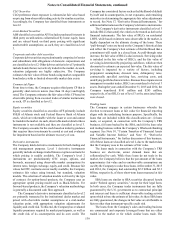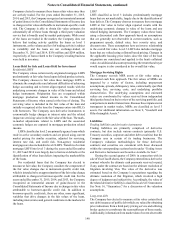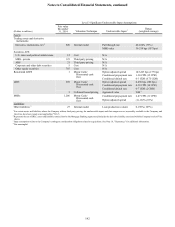SunTrust 2015 Annual Report Download - page 160
Download and view the complete annual report
Please find page 160 of the 2015 SunTrust annual report below. You can navigate through the pages in the report by either clicking on the pages listed below, or by using the keyword search tool below to find specific information within the annual report.Notes to Consolidated Financial Statements, continued
132
hedges on floating rate loans recognized in AOCI are expected
to be reclassified into net interest income during the next twelve
months. The amount to be reclassified into income incorporates
the impact from both active and terminated or de-designated cash
flow hedges, including the net interest income earned on the
active hedges, assuming no changes in LIBOR. The Company
may choose to terminate or de-designate a hedging relationship
due to a change in the risk management objective for that specific
hedge item, which may arise in conjunction with an overall
balance sheet management strategy.
Fair Value Hedging Instruments
The Company enters into interest rate swap agreements as part
of the Company’s risk management objectives for hedging its
exposure to changes in fair value due to changes in interest rates.
These hedging arrangements convert fixed rate, long-term debt
to floating rates. Consistent with this objective, the Company
reflects the accrued contractual interest on the hedged item and
the related swaps as part of current period interest expense. There
were no components of derivative gains or losses excluded in
the Company’s assessment of hedge effectiveness related to the
fair value hedges.
Economic Hedging Instruments and Trading Activities
In addition to designated hedge accounting relationships, the
Company also enters into derivatives as an end user to
economically hedge risks associated with certain non-derivative
and derivative instruments, along with entering into derivatives
in a trading capacity with its clients.
The primary risks that the Company economically hedges
are interest rate risk, foreign exchange risk, and credit risk. The
Company mitigates these risks by entering into offsetting
derivatives either on an individual basis or collectively on a
macro basis.
The Company utilizes interest rate derivatives related to:
• MSRs. The Company hedges these instruments with a
combination of interest rate derivatives, including forward and
option contracts, futures, and forward rate agreements.
• IRLCs and mortgage LHFS. The Company hedges these
instruments using forward and option contracts, futures, and
forward rate agreements.
The Company is exposed to volatility and changes in foreign
exchange rates associated with certain commercial loans. To
hedge against this foreign exchange rate risk, the Company enters
into foreign exchange rate contracts that provide for the future
receipt and delivery of foreign currency at previously agreed-
upon terms.
The Company enters into CDS to hedge credit risk
associated with certain loans held within its Wholesale Banking
segment. The Company accounts for these contracts as
derivatives and, accordingly, recognizes these contracts at fair
value, with changes in fair value recognized in other noninterest
income in the Consolidated Statements of Income.
Trading activity primarily includes interest rate swaps,
equity derivatives, CDS, futures, options, foreign currency
contracts, and commodities. These derivatives are entered into
in a dealer capacity to facilitate client transactions, or are utilized
as a risk management tool by the Company as an end user
(predominantly in certain macro-hedging strategies). The
macro-hedging strategies are focused on managing the
Company’s overall interest rate risk exposure that is not
otherwise hedged by derivatives or in connection with specific
hedges and, therefore, the Company does not specifically
associate individual derivatives with specific assets or liabilities.


